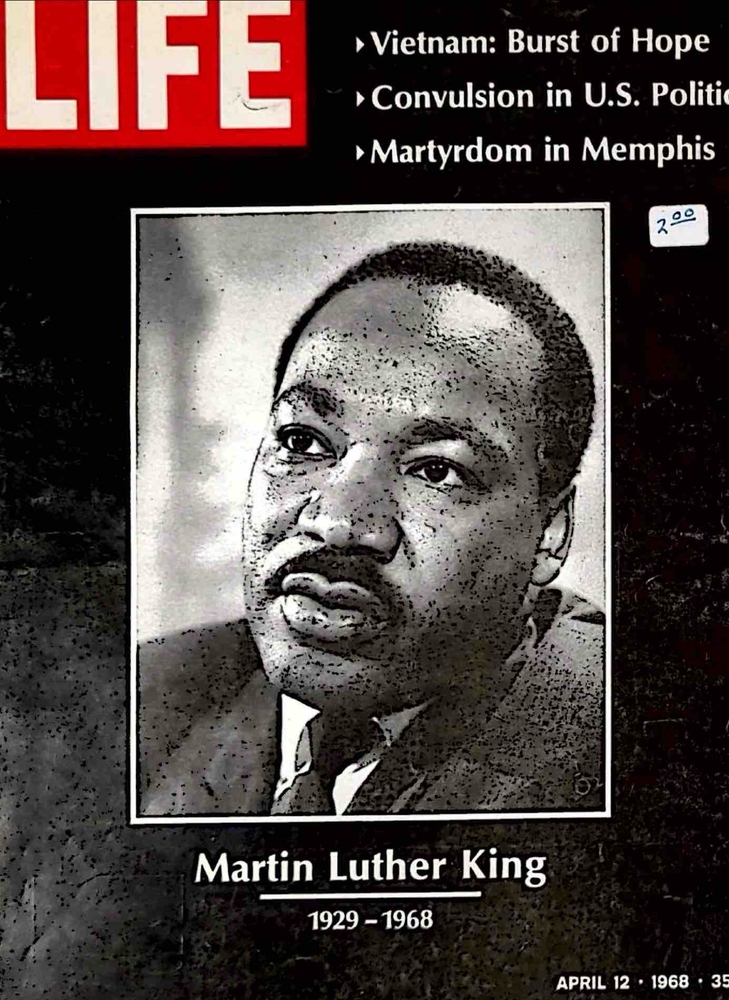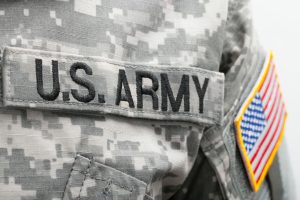By Brian Figeroux, Esq. | Editorial Credit: A. Marino/ shutterstock.com
Martin Luther King Jr. was not only a civil rights leader but also a moral visionary who believed in the transformative power of love, justice, and nonviolence. His work, which combined the spiritual teachings of Christianity with the political philosophy of nonviolence, left an indelible mark on American history.
Introduction to Martin Luther King Jr.
Dr. Martin Luther King Jr., born on January 15, 1929, in Atlanta, Georgia, is one of the most iconic figures in American history and a central leader of the Civil Rights Movement. As a Baptist minister and activist, King advocated for nonviolent resistance to racial segregation, inequality, and injustice. His leadership and activism profoundly shaped the Civil Rights Movement during the 1950s and 1960s, as he sought to dismantle the deep-rooted systems of racial discrimination in the United States. King’s ability to inspire hope through his powerful oratory and moral vision earned him international recognition, including the Nobel Peace Prize in 1964.
King’s leadership extended beyond simply advocating for African Americans’ rights; he became a symbol of a universal struggle for human dignity and justice. His work transcended racial boundaries and sought to unite people across class, race, and religion, advocating for a society where individuals would be judged by the “content of their character” rather than the color of their skin. King’s legacy continues to inspire civil rights activism worldwide, and his philosophy of nonviolence remains a blueprint for modern social justice movements.
Early Life and Education
King was born into a middle-class African American family in Atlanta. His father, Martin Luther King Sr., was a pastor at Ebenezer Baptist Church, and his mother, Alberta Williams King, was a former schoolteacher. Both of King’s parents played crucial roles in his early education, instilling in him values of faith, discipline, and a sense of moral obligation to fight against injustice.
King excelled in school, and his academic success earned him a place at Morehouse College in Atlanta at the age of 15. It was here that King first encountered the philosophy of nonviolence, inspired by the teachings of Mahatma Gandhi. After graduating with a degree in sociology in 1948, King pursued theological studies at Crozer Theological Seminary in Pennsylvania, where he deepened his commitment to the Christian principles of love and forgiveness. He later earned a Ph.D. in systematic theology from Boston University in 1955.
During his time at Boston University, King was influenced by several intellectual and spiritual traditions. He studied the works of Gandhi, whose philosophy of nonviolent resistance would become a cornerstone of his own civil rights strategy. King also drew from Christian theologians like Reinhold Niebuhr and the social gospel tradition, which emphasized the importance of applying Christian ethics to social justice issues.
Core Beliefs and Influences
King’s beliefs were rooted in several key principles that shaped his leadership:
- Nonviolence: At the heart of King’s philosophy was the belief in nonviolent resistance as a moral and effective means of combating injustice. He believed that violence only perpetuated hatred and oppression, whereas nonviolent resistance could awaken the conscience of the oppressor and lead to reconciliation.
- Civil Disobedience: King was a proponent of civil disobedience, the act of peacefully violating unjust laws. This strategy was famously employed during the Montgomery Bus Boycott, the Birmingham Campaign, and other key moments of the Civil Rights Movement. Inspired by Gandhi’s use of civil disobedience against British colonialism, King believed that breaking unjust laws in a nonviolent manner exposed the moral failings of the law and helped bring about meaningful change.
- The Beloved Community: One of King’s central visions was the creation of a “Beloved Community,” a society rooted in love, justice, and equality for all people. For King, the Beloved Community was not just a goal for African Americans but for all of humanity. It was a global vision of a peaceful, just society where conflict was resolved through mutual understanding and cooperation rather than violence and coercion.
- Social and Economic Justice: Although King is often associated with the fight against racial segregation, he also focused on broader issues of economic inequality and poverty. He believed that civil rights were incomplete without addressing economic disparities and creating opportunities for all people to live with dignity.
Leadership in the Civil Rights Movement
The Montgomery Bus Boycott
King first rose to national prominence in 1955, when he became a key figure in the Montgomery Bus Boycott, a pivotal moment in the Civil Rights Movement. The boycott was initiated after Rosa Parks, an African American woman, refused to give up her seat to a white man on a segregated bus in Montgomery, Alabama. In response to Parks’ arrest, local civil rights leaders organized a boycott of the city’s bus system, which lasted for over a year.
As the newly appointed president of the Montgomery Improvement Association, King played a leading role in organizing and sustaining the boycott. His speeches and sermons called for nonviolent resistance and emphasized the moral righteousness of the boycott. Despite facing harassment, threats, and even the bombing of his home, King’s steadfast commitment to nonviolence helped sustain the boycott, which ultimately led to a U.S. Supreme Court ruling that declared segregation on public buses unconstitutional.
The success of the Montgomery Bus Boycott established King as a national leader and a symbol of the Civil Rights Movement’s commitment to nonviolent protest.
Southern Christian Leadership Conference (SCLC)
Following the success of the boycott, King and other civil rights leaders founded the Southern Christian Leadership Conference (SCLC) in 1957. The SCLC sought to coordinate civil rights activities across the South and promote nonviolent resistance as the primary tactic for achieving racial equality. Under King’s leadership, the SCLC organized campaigns to challenge segregation in cities across the South, including Birmingham, Selma, and Albany.
One of the SCLC’s most significant campaigns was the Birmingham Campaign in 1963, which aimed to desegregate public facilities in Birmingham, Alabama. The campaign attracted national attention when police used dogs, fire hoses, and other brutal tactics against peaceful protesters, including children. The images of this violence shocked the nation and contributed to a growing sense of urgency for civil rights legislation.
March on Washington and the “I Have a Dream” Speech
The culmination of King’s leadership during the early 1960s was the March on Washington for Jobs and Freedom on August 28, 1963. Organized by a coalition of civil rights groups, the march brought together more than 250,000 people from across the United States to demand civil rights legislation, an end to racial segregation, fair wages, and economic justice.
It was at this historic event that King delivered his iconic “I Have a Dream” speech, which is widely regarded as one of the greatest speeches in American history. In this speech, King articulated his vision for a racially integrated and just society, invoking powerful imagery of unity, freedom, and equality.
King’s leadership during the March on Washington helped pave the way for the passage of key civil rights legislation, including the Civil Rights Act of 1964 and the Voting Rights Act of 1965. These legislative victories marked significant milestones in the fight for racial equality in the United States.
Later Activism and the Poor People’s Campaign
In the latter part of his career, King increasingly focused on issues of economic inequality and poverty. He believed that civil rights victories would be incomplete without addressing the systemic economic disparities that affected African Americans and other marginalized communities.
In 1968, King launched the Poor People’s Campaign, which aimed to unite poor people of all races in a movement for economic justice. The campaign called for economic reforms, including guaranteed employment, a living wage, and affordable housing. King’s focus on economic issues was seen as a broadening of his vision, as he sought to challenge not only racial injustice but also economic exploitation.
Tragically, King was assassinated on April 4, 1968, in Memphis, Tennessee, while supporting striking sanitation workers. His death sent shockwaves through the nation, but his legacy as a champion of justice, equality, and peace endures.
Analysis of the “I Have a Dream” Speech
Historical Context
King delivered the “I Have a Dream” speech on August 28, 1963, at the Lincoln Memorial in Washington, D.C., during the March on Washington for Jobs and Freedom. The event was one of the largest political rallies in U.S. history, and it came at a critical moment in the Civil Rights Movement. Segregation and racial inequality were still rampant across much of the country, particularly in the South, where Jim Crow laws enforced racial discrimination in schools, workplaces, and public spaces. The March on Washington was organized to press the U.S. government to pass civil rights legislation and to address the deep economic inequalities faced by African Americans.
King’s speech, delivered before a crowd of more than 250,000 people, was a pivotal moment in the Civil Rights Movement and became a defining symbol of the struggle for racial justice. The speech was broadcast live on national television, and its powerful message of hope and unity resonated with millions of Americans.
Structure and Rhetorical Devices
The “I Have a Dream” speech is a masterpiece of oratory, and its effectiveness lies in its combination of rhetorical devices, biblical references, and appeals to American ideals. The speech is divided into several sections, each building upon the other to create a powerful crescendo of hope and inspiration.
- The Opening: A Promise Unfulfilled: King begins his speech by referencing the Emancipation Proclamation, issued by President Abraham Lincoln 100 years earlier, which was supposed to free African Americans from slavery. However, King notes that African Americans are still not free in 1963, as they continue to live under segregation and economic oppression. By invoking Lincoln, King appeals to the American ideals of freedom and justice, framing the struggle for civil rights as part of the nation’s unfinished business.
- Metaphors of Debt and Justice: King employs a powerful metaphor when he describes America’s failure to live up to its promises of equality as a “bad check” that has come back marked “insufficient funds.” This metaphor captures the injustice faced by African Americans, who have been denied the basic rights promised to them by the Constitution and the Declaration of Independence. King, however, maintains hope, stating that the “bank of justice” is not bankrupt and that there is still time to honor the “promissory note” of freedom and justice for all citizens.
- The Dream Sequence: The most famous part of King’s speech is the “I Have a Dream” sequence, where he articulates his vision of a racially integrated and harmonious society. In this section, King repeats the phrase “I have a dream,” using anaphora, a rhetorical device in which a phrase is repeated at the beginning of successive clauses. This repetition creates a rhythmic and emotional build-up, making the speech more memorable and impactful.
In his dream, King envisions a future where people are judged by their character, not their skin color. He imagines a day when “little black boys and black girls will be able to join hands with little white boys and white girls as sisters and brothers.” This vision of racial harmony is both a reflection of King’s personal faith and an appeal to America’s founding ideals of equality and liberty.
- Biblical and Patriotic References: Throughout the speech, King draws on both biblical imagery and American ideals. By quoting the Bible, King connects the civil rights struggle to a broader moral and spiritual framework, appealing to the religious beliefs of many in his audience. For example, he quotes from the Book of Isaiah when he says, “I have a dream that every valley shall be exalted, every hill and mountain shall be made low,” a vision of divine justice and equality.
King also references the Declaration of Independence and the Constitution, framing the civil rights movement as a continuation of the American Revolution’s fight for freedom and equality. By doing so, he reminds his audience that the struggle for civil rights is not un-American, but rather an effort to fulfill the nation’s founding principles.
- The Conclusion: A Call to Action and Hope: King concludes his speech with a call for nonviolent resistance and unity. He urges the crowd to continue the struggle for justice with discipline and dignity, without resorting to hatred or violence. His final words are a stirring invocation of hope, declaring, “Let freedom ring,” as he imagines a future where freedom and justice are realities for all Americans. King’s conclusion emphasizes the moral high ground of the civil rights movement and the belief that justice will ultimately prevail.
Themes in the “I Have a Dream” Speech
- Racial Equality: At its core, King’s speech is a demand for racial equality. He envisions a future where individuals are not judged by their race but by their character, and he condemns the ongoing segregation and discrimination faced by African Americans.
- American Ideals and the Promise of Freedom: King frames the civil rights struggle as part of America’s quest to live up to its founding ideals of liberty and justice for all. He calls on the U.S. government and its citizens to honor the promises made in the Declaration of Independence and the Constitution.
- Hope and Optimism: Despite the injustices faced by African Americans, King’s speech is filled with hope. His dream of a better future is one of racial harmony, justice, and peace. King’s optimism inspires his audience to believe that change is possible, even in the face of significant challenges.
- Nonviolence and Moral Authority: King emphasizes the importance of nonviolent resistance throughout the speech. He rejects hatred and violence as methods for achieving change, instead advocating for love, understanding, and reconciliation.
Conclusion
Martin Luther King Jr. was not only a civil rights leader but also a moral visionary who believed in the transformative power of love, justice, and nonviolence. His work, which combined the spiritual teachings of Christianity with the political philosophy of nonviolence, left an indelible mark on American history. King’s leadership in the Civil Rights Movement, particularly through his involvement in events like the Montgomery Bus Boycott, the Birmingham Campaign, and the March on Washington, helped secure crucial legal and social victories for African Americans.
The “I Have a Dream” speech stands as one of the most powerful and influential speeches in history. Its message of hope, equality, and nonviolent resistance continues to inspire people across the world, reminding us of the ongoing struggle for justice and human dignity. King’s vision of a “Beloved Community,” where all people are treated with respect and fairness, remains a guiding principle for those who continue the fight for civil rights and equality today.
Click Here to Schedule a Consultation with Figeroux & Associates Today!



